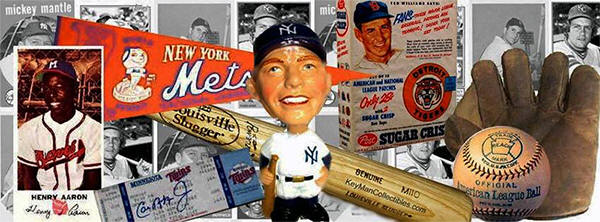| |
The Rawlings No. DW 10 X, "Deep Well
Pocket" A high quality softball glove
features the "U" Crotch" and sewed down
"Deep Well Pocket" The combination of
the "U Crotch" and Deep Well Pocket"
assured correct pocket depth for
handling softballs. Made of select
glove leather. Full shaped pad, large
heel, Streamlined fingers and thumb.
Leather welted seams, laced heel.
Entire glove leather lined. Adjustable
H type ball trap. Roll leather bound
edges. Hand Oil treated. "Special
Service U.S. Army" is stamped to the
right of the broad wrist strap, which
ties it to the WWII "Baseball Equipment
Fund"
With the onset of the U.S. involvement
in WWI in 1917, Washington Senators
owner Clark Griffith launched a plan to
support our troops by raising money to
purchase athletic equipment, mainly
baseball gear, to outfit every U.S.
military training camp. Baseball was
considered essential to morale. The
Y.M.C.A. shipped 144,000 bats and
79,680 balls to the troops overseas
with the money raised by Griffith.
Since its inception in 1933, All-Star game profits were funneled to a
relief fund benefiting retired indigent
ballplayers. In 1941, the profits were
sent to the USO, to buy athletic
equipment for servicemen. Four days
after the Japanese bombed Pearl Harbor,
baseball executives established the
WWII version of the 1917, Bat & Ball
Fund, renamed the "Baseball Equipment
Fund." Once again Clark Griffith took
charge along with National League
President Ford Frick.
With $25,000 raised by Major League baseball, contributions by the writers
association of America, and all the
proceeded generated by the 1942
All-Star game Clark Griffith contacted
several Sporting Goods companies.
Griffith obtained a discounted price
for equipment from Louisville Slugger,
Goldsmith, Spalding and the Wilson
Sporting Goods Companies.
The first order was for 18,000 baseballs and 4,500 bats. The equipment was
to be distributed among military camps
at the discretion of the joint Army and
Navy Committee on welfare and
Recreation. There were two types of
Kits put together during WWII. Kit-A
included a dozen baseballs and three
bats; Kit-B contained the catchers
gear, a mitt, mask, chest protector and
shin guards. It was reported by the
Sporting News that 6,000 kits were
shipped over seas, but 35 kits were
lost at sea as a result of a submarine
attack.
|
|


